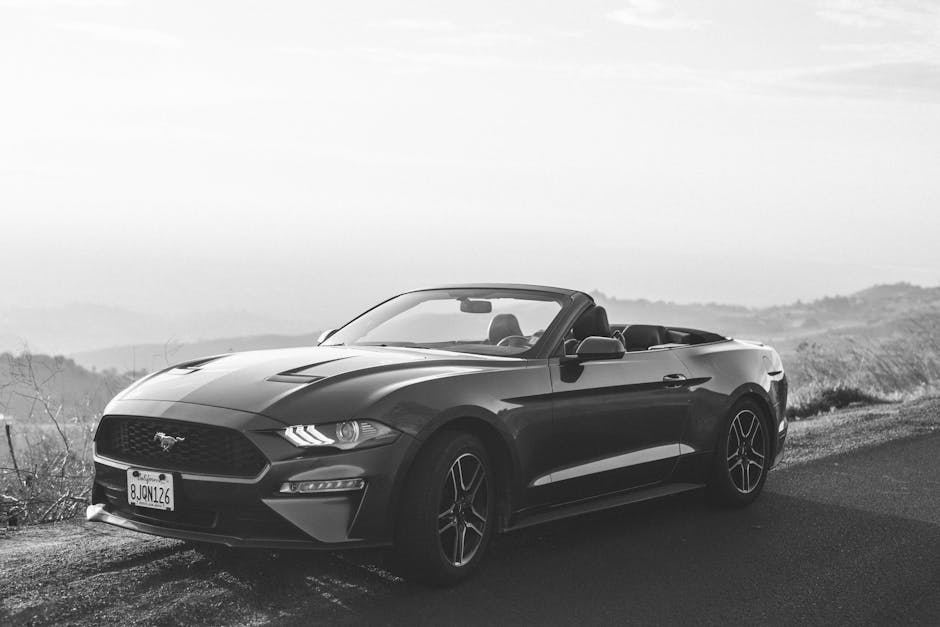Exploring the Legacy of the Ford Mustang: A Comprehensive Review

The Ford Mustang, an emblem of car culture has fascinated car enthusiasts since it was first introduced in 1964. Renowned for its performance, unique design and cultural influence the Mustang stands out as one of the most iconic muscle cars in history. Over the years it has gone through models and generations each contributing to its illustrious heritage. This detailed examination explores the history of the Mustang, its technological advancements, cultural importance and enduring popularity among car aficionados around the globe.
Historical Background
Debuting at the New York Worlds Fair on April 17 1964 the Ford Mustang was a brainchild of Lee Iacocca, Vice President of Ford Motor Company. It was crafted to appeal to a demographic with its sporty look and accessible price point. The initial reception was remarkable; than 22,000 units were sold on its first day.
Throughout the '60s and '70s the Mustang underwent design modifications to stay current with market demands. The initial generation (1964 1973) showcased body styles such as coupes, convertibles and fastbacks. Noteworthy models, like the Shelby GT350 and Boss 302 bolstered the lineups performance credentials.
The Mustang II, known as the generation from 1974 to 1978 faced difficulties due to increasing fuel costs and stricter emissions rules. Despite these challenges it maintained sales by focusing on affordability and practicality.
Advancements in Engineering
The Ford Mustang has undergone significant engineering advancements over time. Early models featured a variety of inline six and V8 engines striking a balance between performance and cost effectiveness. Later generations introduced turbocharged four cylinder engines as a yet powerful option.
A notable innovation was seen in the generation (2005 2014) which brought back retro styling elements reminiscent of the original models. This era also saw enhancements in handling and safety features enhancing its competitiveness in the market.
The current sixth generation (2015 present) continues to push boundaries with offerings like the EcoBoost engine and high performance versions such as the Shelby GT350 and GT500. Advanced technologies like rear suspension and sophisticated infotainment systems have made the Mustang a versatile vehicle suitable, for everyday driving or track use.
Cultural Impact
Beyond its performance prowess the Ford Mustang holds cultural significance. The Mustang has become a symbol of freedom and rebellion often seen in movies, music videos and TV shows. Its iconic presence in films like "Bullitt" (1968) starring Steve McQueen has solidified its position in culture.
Furthermore the Mustang has sparked the formation of car clubs and enthusiast communities globally. Events such as "Mustang Week" in Myrtle Beach draw thousands of owners who unite to celebrate their shared love for this vehicle.
The international appeal of the Mustang is also evident. While it retains its essence it has gained a devoted following in markets across Europe and Asia. This widespread recognition highlights its status as an iconic car.
Variants and Special Editions
- Shelby GT350: Renowned for its track focused performance featuring a high revving V8 engine.
- Bullitt: A homage to the famous movie car with distinct styling cues.
- Mach 1: Combines retro design elements, with performance features.
- Eleanor: Showcased in "Gone in 60 Seconds " this custom edition has achieved legendary status among collectors.
- GT500: The epitome of Mustang performance boasting supercharged V8 power.
Comparing Ford Mustang Generations
| Generation | Years | Key Features |
|---|---|---|
| First Generation | 1964 1973 | Known for its classic design offering various body styles and featuring the iconic Shelby GT350. |
| Second Generation | 1974 1978 | Noted for its size and focus on fuel economy during the fuel crisis period. |
| Third Generation | 1979 1993 | Introduced aerodynamic design. The Fox body platform. |
| Fourth Generation | 1994 2004 | Showcased sleeker styling and enhanced performance options. |
| Fifth Generation | 2005 2014 | Embraced a retro inspired design with safety features. |
| Sixth Generation | 2015 present | Integrated technology with an EcoBoost engine option. |
Insights from Ford Mustang Enthusiasts
The enduring popularity of the Ford Mustang can be attributed to its fan base. Owners often share anecdotes that reveal their deep connection to this iconic car. For instance Jane Doe, from California fondly reminisces about her drive in a vintage 1967 Mustang describing it as a thrilling experience filled with historical significance.
Furthermore enthusiasts are drawn to the customization potential of the Mustang. Whether its installing aftermarket exhaust systems or opting for paint jobs owners have the freedom to personalize their vehicles to mirror their individuality.John Smith, a resident of Texas shared how he enhanced his 2015 GT into a high performance machine; "By upgrading suspension parts and adding a supercharger my Mustang reached a new level."
Looking Ahead for the Ford Mustang
The future appears bright for the Ford Mustang as it evolves to fit the changing landscape while staying true to its origins. The introduction of models like the Mach E demonstrates Fords dedication to innovation while upholding performance and tradition.
The transition towards mobility opens up new possibilities for the Mustang brand. With advancements in battery tech and charging infrastructure future Mustang models may boast greater acceleration capabilities than their gasoline powered counterparts while also reducing environmental impact.
The Ford Mustang has made a lasting impact, on history with its combination of top notch performance and cultural significance that resonates across generations globally.
